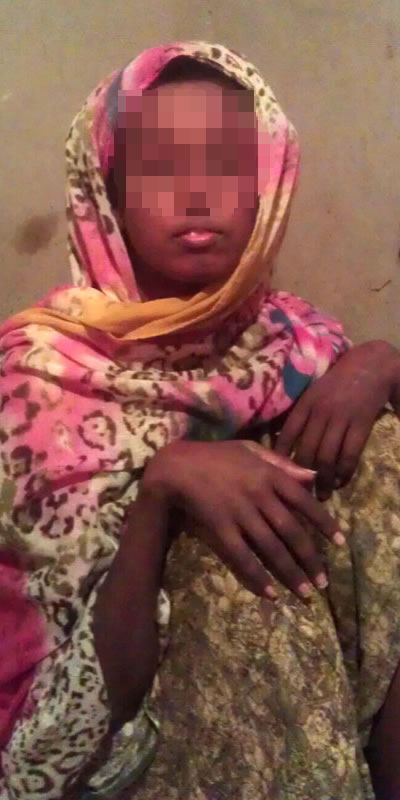
Wednesday, January 28, 2015
Her rescue is as remarkable as the rigors she endured during her journey – which included riding in a car trunk part of the way, before travelling by sea to the Arabian Peninsula and then across the desert to Egypt and Libya.
 Twenty-one-year-old Fartuun (name changed to protect her identity) was trafficked in 2013 by a human smuggling ring moving young people from Somaliland to Saudi Arabia. IOM was able to rescue her in Libya and helped her get back home. © IOM 2015 |
An unknown number of Somali, Eritrean and Ethiopian migrants were among the 3,279 migrants who died in the Mediterranean, according to Fatal Journeys: Tracking Lives Lost during Migration, a report published by IOM’s ongoing Missing Migrants Project (mmp.iom.int).
“We thought she was joking when she said she wanted to travel to Europe. Even though our family might not have everything in the world, we could have definitely taken better care of her than those men in Libya who took advantage of her,” said Suleiman**, Fartuun’s brother.
Her ordeal began in 2013, when she fell in with a group of young men operating a human smuggling ring moving young people from Somaliland to Saudi Arabia. The trip to Libya took about two weeks, traveling the whole way with Somalis.
But in Libya things began to fall apart. She tried to work odd jobs to pay for passage to Europe, but with civil war raging across the country, safety – not income – became her top priority. The smugglers who had taken her to Libya grew impatient, finally making her their prisoner.
“They confiscated her travel documents and threatened to report her to the authorities if she tried to escape. She was held against her will for six months, repeatedly abused and eventually fell seriously ill,” said an IOM Libya staffer.
Fartuun’s case was brought to IOM’s attention when her mother, who lives in Somaliland, contacted IOM after she listened to an IOM radio show that draws attention to the dangers of irregular migration. The radio show, which is funded by the Norwegian Ministry of Justice and Public Security, is part of an information campaign that sensitizes Somali youth to the dangers of irregular migration.
It took IOM staffers over a month to find her in a crowded Tripoli hospital, injured and close to death. She also was responsible for an enormous medical bill, which she could not pay. In collaboration with local police, IOM had her moved to another hospital for her protection.
IOM offices in Libya and Somalia then arranged temporary travel documents for her and organized her evacuation from Libya last week, flying through Istanbul, then on to Somaliland, where she was reunited with her family in Hargeisa.
As thrilled as the young mother was to be home, the IOM team was just as gratified.
“Congratulations goes to my colleagues at Operations in IOM Somalia, who from thin air started building this case and never gave up even when things felt like she would not be found,” said Mohamed Omer, an IOM officer in Hargeisa. “I also congratulate IOM Libya colleagues for never giving up.”
“I have been assisting migrants’ return to Hargeisa for the last five years at this very airport, but I never felt so emotional like this one,” Mr. Omer added. “The mother has been crying and kissing everybody with an IOM badge, while receiving her daughter – it was my proudest moments in line of duty.”
IOM Somalia Chief of Mission Gerry Waite said: “As the Missing Migrants Project shows, thousands of young migrants from the Horn of Africa – Ethiopians, Somalis, Eritreans – are exposing themselves to these terrible risks and feeding a humanitarian crisis. Increases in overall numbers of arrivals and deaths at sea in the Mediterranean and Horn of Africa underscore the high demand for smuggling services and the complex and profitable criminal networks that move people across borders. Inter-regional commitment and action are urgently required to protect migrants.”
Fartuun’s assisted voluntary return was funded by IOM Libya’s NOAH II regional project, which responds to shifting migratory flows and increasing migrant vulnerabilities. NOAH II is sponsored by the US Department of State’s Bureau of Population, Refugees and Migration (PRM).
*name changed to protect her identity **name changed to protect his identity
For more information please contact IOM Somalia. Julia Hartlieb, Tel.:+254 731 988 846, Email: jhartlieb@iom.intor Feisal Muhamud, Tel. +254 721 290 074, Email: famuhamud@iom.int
No comments:
Post a Comment